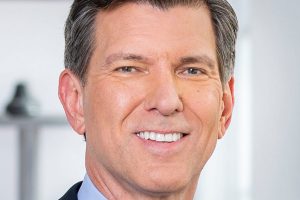KPMG's US CEO shares how the 'Big 4' firm is thinking about the future of work, returning to the office, and burnout

Samantha Lee/Business Insider
- Paul Knopp is the CEO and North and South America chairman of KPMG.
- Knopp told Insider how CEOs are planning for the future of work.
- Business leaders are prioritizing ESGs, employee well-being, and corporate purpose.
- See more stories on Insider’s business page.
Paul Knopp had been working at KPMG for 38 years when, in July, he was appointed the US CEO and chairman.
He came into the role during a global pandemic and a nationwide outcry for racial and social justice. Since then, he’s been helping KPMG’s more than 35,000 employees navigate an uncertain future. The management-consulting industry has been upended by the pandemic. Consultants have had to give up traveling and burnout is on the rise.
“We’re spending a significant amount of time to ensure that we are building a sustainable, positive culture — especially when we don’t know what normal is going to look like in the future,” Knopp said.
Across the board, the pandemic has changed how companies do business. About 49% of the CEOs in a recent KPMG survey of 500 executives said they plan to increase their companies’ focus on environmental, social, and governance programs. This marks a shift toward stakeholder capitalism, or the idea that companies should pursue initiatives that add value for all stakeholders, such as customers and employees, not just shareholders.
Insider spoke with Knopp about how he’s led his team through the pandemic and the trends he’s seeing across all businesses.
This interview has been edited for length and clarity.
You mentioned that the coronavirus pandemic and the events of 2020 have taken a toll on employees. How are you addressing burnout?
Burnout is a topic that we hear a lot about, and it’s certainly a phenomenon that is real and important. And part of the reason for burnout is that a lot of employees are replacing their commuting time with work.
When we were working at the office, we’d have to find a physical space to have a meeting. We’d have to travel to meetings. But in this current environment, we can just pile video meeting on top of video meeting. There is this stress that’s created by this virtual environment.
We’ve been trying to think very intentionally about how we can alleviate some of those pressures. One example is by ending 30-minute meetings five minutes early, or one-hour meetings 10 minutes early. We’ve also introduced “No Video Fridays.”
It’s really about respecting boundaries, and it’s really easy to lose sight of those boundaries.
Companies are considering a hybrid work model, in some cases allowing employees to work anywhere they want. What are some of the benefits and risks that come with a hybrid setup?
We’re still trying to formulate exactly what that hybrid model is going to look like moving forward. I hear a lot of CEOs saying we’re still trying to imagine what a more flexible workspace will be like. Employees would face certain risks — like not having the opportunity to come together, mentor, learn and develop, and celebrate achievements together — if they’re remote all the time.
But we’re going to have to be very intentional about ensuring that the new office design isn’t just random, but allows people to thrive and be successful. That’s something we’re spending a lot of time on.
What will be the new normal when we return to the office?
The truth is: We’re still trying to determine what normal is.
Almost every business leader I spoke with admitted that the future won’t look exactly like the past. But they’re trying to determine how the future architecture of workspaces, collaboration, and learning and development will constitute a more “normal” state of the future. We’re very much still in the design phase.
Part of that means we’re listening to our employees and understanding what they want.
KPMG’s survey found that CEOs are increasingly investing in ESG programs in response to the pandemic, particularly in social programs such as sustainability and DEI. Can you share how KPMG is doing this internally?
The two most significant elements of that social component are diversity, equity, and inclusion and employee well-being.
We just issued a DEI transparency report, where we published our diversity numbers and our aspirations for where we want to be in the future. We think that transparency will drive accountability and more progress.
Last year also put a spotlight on employee well-being. We had employees who had COVID-19, and we had employees who dealt with the challenges around trying to work from home while caring for children, elders, or whatever the case may be. Some people were also working from small studio apartments and solitary environments in isolation. We need to focus on well-being, mental health, and the right kinds of benefits to enhance the remote work setting.
What is one thing that you heard from CEOs in the survey that really resonated with you as a leader?
The survey found that CEOs are leaning into their purpose, and that really resonates with me because it’s going to depict how we deliver our services in the future and how we build trust with our people. We’re a values-driven organization, and we use our values to lead us.
At KPMG, we’re spending a significant amount of time to ensure that we are building a sustainable, positive culture — especially when we don’t know what normal is going to look like in the future.
Source: Read Full Article
